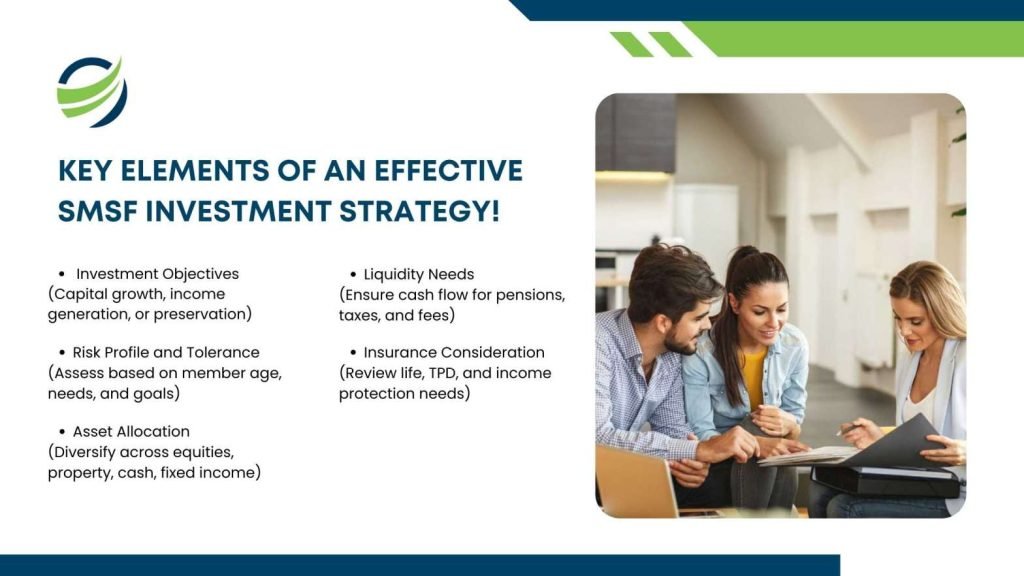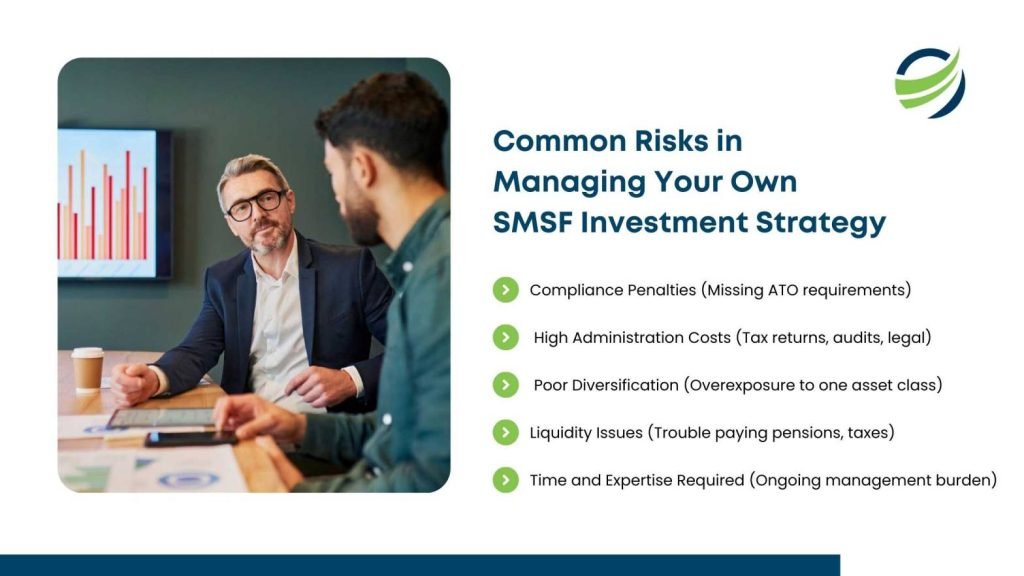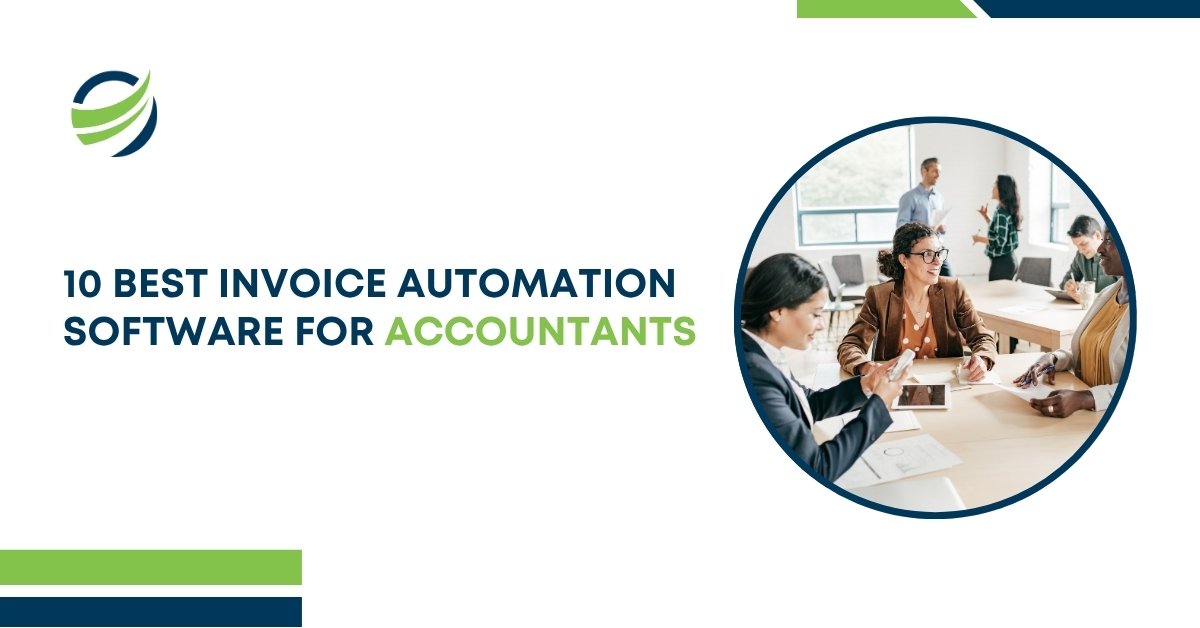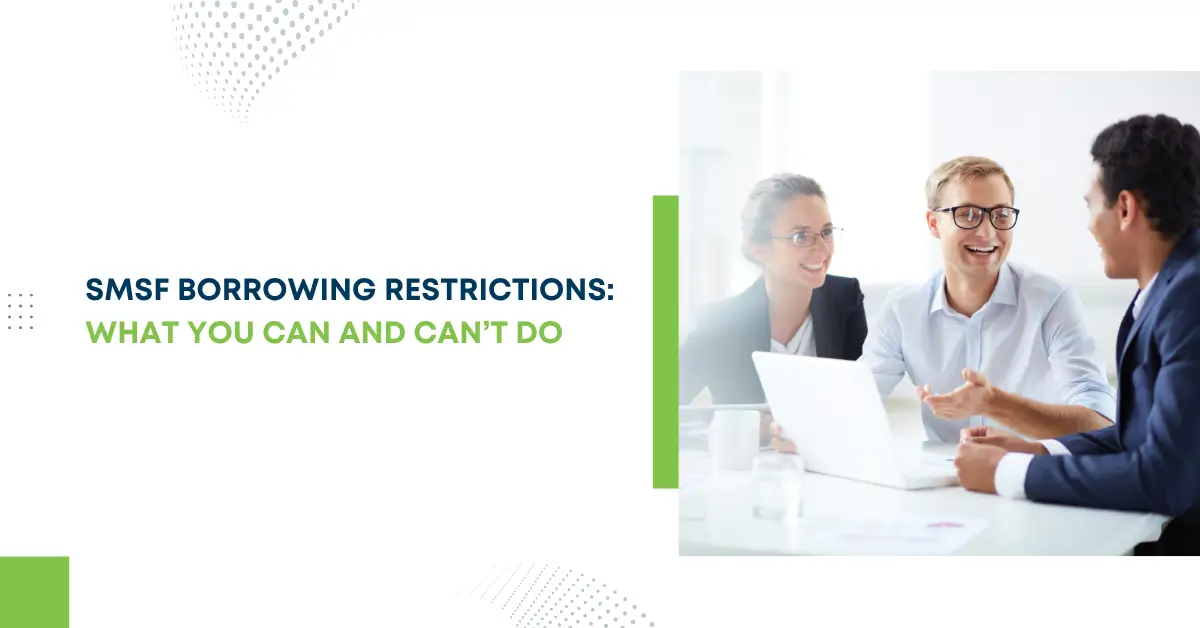SMSF Investment Strategy Template: A Practical Guide for 2025
Creating a solid SMSF investment strategy template is one of the most important responsibilities for trustees of a Self-Managed Super Fund. While it may feel like a compliance requirement at first glance, your investment strategy plays a deeper role: it acts as a guiding document that aligns your fund’s investments with your retirement goals, risk appetite, and liquidity needs.
In this guide, we’ll explore what a compliant strategy should include, provide insights into SMSF investment strategy examples, and highlight how to create an effective investment strategy for SMSF that works for you and your fund members.
Share a few details with us and
grab your checklist instantly!
Why Is an Investment Strategy Essential for Your SMSF?
According to the ATO, all trustees are legally required to prepare and regularly review an investment strategy that reflects the purpose and circumstances of the fund. More than just a checklist item, a thoughtful strategy can help reduce risk, improve fund performance, and ensure alignment with long-term objectives.
While many trustees choose to develop their investment strategy independently, others are increasingly turning to external SMSF management services to ensure their strategy is both compliant and effective. These professional services can provide valuable expertise in crafting and maintaining a robust investment approach.

Key Components of a Compliant SMSF Investment Strategy
To meet the requirements of the SIS Act and ATO guidelines, your investment strategy should cover the following components:
1. Investment Objectives
This section outlines what your fund is aiming to achieve—capital growth, income generation, capital preservation, or a mix of these. The objective must be realistic and tailored to the specific needs of the members.
2. Risk Profile and Tolerance
You need to assess the level of risk that the fund can bear. Factors such as members’ age, income needs, retirement timeline, and personal circumstances should influence your fund’s risk appetite.
3. Asset Allocation
Your strategy must specify the asset classes in which the fund will invest—shares, property, fixed income, cash, and more. Importantly, the ATO expects justification for your asset mix, especially if it is heavily weighted toward one asset class. A diversified portfolio usually offers better protection.
4. Liquidity Requirements
Funds must maintain enough liquid assets to meet obligations such as pension payments, taxes, and fees. Your investment strategy should demonstrate that you’ve considered this requirement.
5. Insurance for Members
While it’s not mandatory to hold insurance, trustees must consider whether members need life, total and permanent disability (TPD), or income protection insurance. This consideration must be documented.
6. Ability to Meet Retirement Objectives
All elements of the strategy should align with helping members reach their retirement goals. Whether it’s early retirement, consistent income, or growth-focused investing, your plan should show how your asset allocation and risk management support those goals.
What to Consider When Creating an SMSF Investment Strategy
A strong self managed super fund investment strategy considers both short-term flexibility and long-term growth. Key considerations include:
- Member Profiles:
Age, employment status, contribution plans, and expected retirement age. - Investment Preferences:
Some members may prefer ethical investing, others may favour high-return assets. - Tax Implications:
Different assets and strategies come with different tax outcomes. - Exit Strategy:
What happens when members retire or pass away? - Compliance Risk:
Will your strategy hold up to ATO scrutiny during an audit? - Professional Support:
Consider whether third-party SMSF investment support would benefit your fund’s management and strategy implementation. This is particularly relevant for trustees who want expert guidance while maintaining control of their fund.

Restrictions on Investment Strategies
While SMSFs offer more control, they’re still subject to strict legal and regulatory rules. Common restrictions include:
- Arms-length investments:
You can’t buy property from a relative or rent it to a family member. - In-house assets:
No more than 5% of the fund’s value can be invested in assets related to a trustee or member. - Sole purpose test:
Every investment must be made solely for the purpose of providing retirement benefits to members. - Borrowing rules:
You can’t borrow money except under specific conditions.
Being unaware of these can lead to costly mistakes and even penalties.
How an SMSF Investment Strategy Template Can Help
Having a clear SMSF investment strategy template helps trustees:
- Save time and avoid missing key compliance points
- Structure their fund with a clear purpose and strategy
- Provide documentation during audits or reviews
- Ensure that investment decisions are consistent with agreed objectives
This template becomes especially helpful during annual reviews or when a fund undergoes changes like adding new members or entering the pension phase.
Share a few details with us and
grab your checklist instantly!
How Often Should the Investment Strategy Be Reviewed?
It’s a common misconception that this is a one-time task. The ATO advises reviewing the investment strategy at least annually. You should also update it whenever significant changes occur, such as:
- Adding or removing a member
- Purchasing a new major asset
- Starting a pension phase
- Market disruptions (e.g., economic downturns)
Maintaining a paper trail or digital record of these reviews shows you’re actively managing the fund.
Sample SMSF Investment Strategy Template
Here’s a simplified version of a SMSF investment strategy template you can adapt:
- Fund Profile:
- Date established
- Trustee details
- Member names and ages
- Investment Objectives:
- State growth/income/preservation goals
- Risk Profile:
- Describe risk tolerance and influencing factors
- Asset Allocation:
- E.g., 40% Australian equities, 20% international equities, 30% property, 10% fixed income
- Liquidity Consideration:
- Discuss how ongoing cash flow needs will be met
- Insurance Consideration:
- Document insurance review for members
- Monitoring & Review Process:
- Include frequency, triggers, and documentation process
- Trustee Declaration:
- Sign-off from all trustees
This format gives you a practical roadmap to craft a compliant and meaningful strategy document.

The Risks and Costs Involved in an SMSF
An SMSF brings great flexibility but also responsibility.
Key risks and costs include:
- Compliance Penalties:
If your investment strategy doesn’t meet ATO expectations or fails to reflect the fund’s circumstances, you may face significant penalties. Non-compliance can lead to rectification orders or even disqualification of trustees. - Administration Costs:
SMSFs involve ongoing expenses like annual tax returns, independent audits, and legal consultations. These can accumulate quickly and reduce your overall retirement savings if not managed wisely. - Poor Diversification:
Placing too much capital in one asset class like residential property can expose the fund to market downturns. Lack of diversification increases volatility and the risk of losses. - Liquidity Risk:
Liquid assets can become a serious problem when the fund needs to make pension payments or cover unexpected costs. Property-heavy portfolios, for instance, may struggle to provide timely cash flow. - Time and Expertise Requirements:
Being a trustee is not a passive role. You need to stay updated with legal obligations, investment knowledge, and reporting duties. Mistakes made from inexperience can be costly and irreversible.
To address these challenges, many trustees are now opting for delegated SMSF strategy solutions, which can help mitigate risks while ensuring professional oversight of their fund’s investment strategy. These solutions provide trustees with the expertise needed to navigate complex compliance requirements and investment decisions while maintaining control over their retirement savings
Understanding these trade-offs is key before setting your SMSF strategy in motion.
Final Thoughts: Creating a Future-Ready Investment Strategy
Your SMSF investment strategy shouldn’t just tick a box it should work as a living document that supports smarter decisions, adapts as your life changes, and ultimately helps you retire on your own terms.
Too often, trustees get caught up in the compliance checklist and miss the bigger picture. But here’s the truth: a clear, well-thought-out strategy gives you direction, protects your investments, and shows the ATO you’re serious about managing your fund.
If you’re still using a one-size-fits-all template or haven’t revisited your plan in a while, it might be time to take a closer look. And if you’re wondering where to start or what good looks like for your fund we’re here to help.








